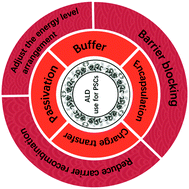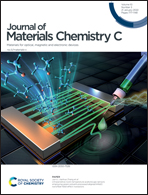Research progress of atomic layer deposition technology to improve the long-term stability of perovskite solar cells
Abstract
In the past decade, organic–inorganic hybrid perovskite solar cells have developed rapidly and are now marching towards the stage of commercialization. In the process of developing perovskite solar cells, researchers have explored various schemes to improve the performance of perovskite solar cells, which include ion engineering, additive engineering, passivation engineering, interface layer engineering, packaging engineering, etc. While improving efficiency, these methods also enhance the long-term stability of the device, including thermal, humidity, and UV-light stability, etc. Among them, atomic layer deposition technology is a powerful tool for preparing dense and defect-free films with Å level thickness at a low temperature. It also has high conformality and repeatability and plays a vital role in the stability of the perovskite device. Nowadays, more and more researchers use atomic layer deposition technology to prepare high-quality thin films to improve the performance of perovskite solar cells. This paper summarizes the typical cases of using atomic layer deposition technology to prepare the charge transport layer, passivation layer, buffer layer and encapsulation layer to improve the device conversion efficiency, humidity stability and thermal stability reported in recent years. It also discusses the research direction and existing challenges of atomic layer deposition technology in the future development of perovskite devices.



 Please wait while we load your content...
Please wait while we load your content...